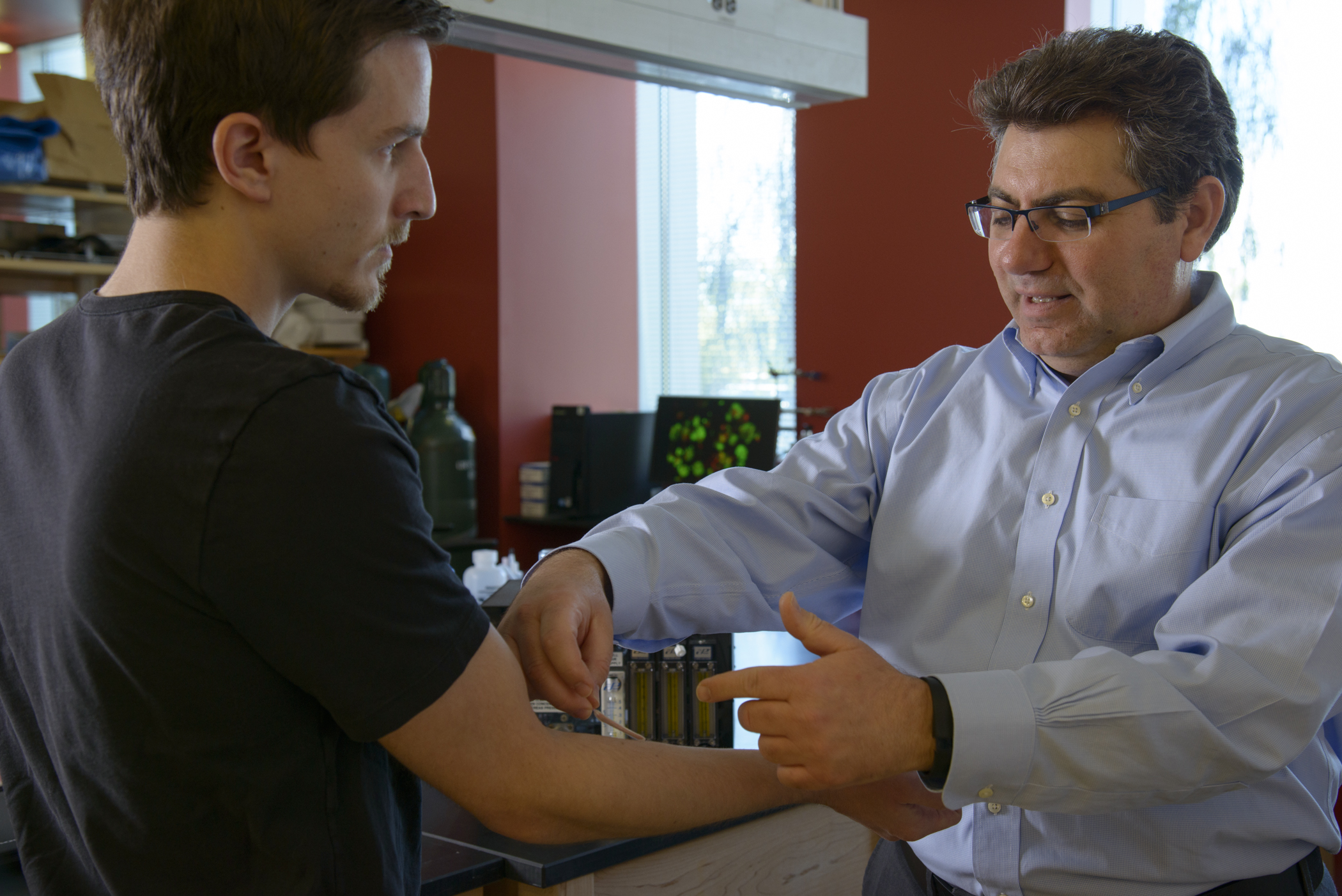Breathing New Life Into Diabetes Treatment
This story first appeared in UANews and was written by Alexis Blue, University Relations - Communications, ablue@email.arizona.edu
Dr. Klearchos Papas, a professor in the University of Arizona Department of Surgery, and his collaborators have been awarded $3 million in grants and contracts for ongoing efforts to revolutionize islet cell transplantation in patients with Type 1 diabetes.
Their work includes the development of an implantable oxygen generator aimed at improving the function and efficacy of implanted, encapsulated insulin-producing islet cells. If successful, the advancement has the potential to reverse Type 1 diabetes in some patients without the need for immunosuppression.
"We believe this could be a breakthrough in diabetes treatment," said Papas, scientific director of the UA's Institute for Cellular Tr ansplantation.
ansplantation.
JDRF, the world's largest charitable funder of Type 1 diabetes research and formerly known as the Juvenile Diabetes Research Foundation, has awarded Papas $1 million to support the clinical translation of new islet cell encapsulation techniques that would eliminate the need for immunosuppression drugs after transplant.
While JDRF is funding the implementation and optimization of these approaches in in the laboratory setting, the National Institutes of Health, through its Small Business Innovation Research Program, is funding the actual design and manufacturing of components and devices that will be needed to deliver the therapy in the clinic.
Papas is co-principal investigator, with Linda Tempelman of a Massachusetts-based research and development firm, Giner Inc., on the project to develop the implantable oxygen generator that would be used in the therapy. That project was awarded a two-year, approximately $2 million grant by the NIH, and Papas received a sub-award of about $500,000 for the testing of the devices at the UA.
Type 1 diabetes afflicts as many as 3 million Americans. In those who have the disease, the pancreas produces little or no insulin, a hormone that helps the body use or store blood glucose from food. Most patients require regular insulin injections, but some need surgical intervention either a pancreas transplant or an islet cell transplant, in which insulin-producing islet cells from a donor pancreas are infused into the liver.
Transplantation, however, comes with challenges. For one, the number of available donor pancreases is limited. To address this hurdle, Papas is studying the efficacy of islet cells from sources other than the human pancreas including beta cells derived from human stem cells, and islet cells from pigs.
Another challenge is that those who receive an islet cell transplant must take immunosuppressant drugs for the rest of their life, which can be very taxing on the body. For that reason, transplants are performed only on patients who absolutely need them and are rarely done in children. This is especially problematic, since the onset of Type 1 diabetes most often occurs during childhood or young adulthood.
As an alternative to implanting cells directly into the liver, the medical community has explored implanting patients with cells contained in a special immunoisolation device, which would eliminate the need for anti-rejection drugs and potentially allow for the safe use of islet cells from alternate sources.
Implantable just beneath the skin, the postage-stamp-size device has semipermeable membranes designed to protect the cells from attack by the immune system while still allowing the insulin produced by the cells to pass through the device to the body.
The challenge with the device is the number of islet cells it can successfully accommodate only about 1,000. The human body typically requires closer to 500,000. When too many cells are crammed into a small space, they start to suffocate from a lack of oxygen, Papas said.
Papas and his colleagues found in a pilot study, funded by JDRF, that supplying oxygen to the cells via a generator improves cell functioning and allows more cells to thrive.
The cells function so well under these conditions, in fact, that the method requires significantly fewer cells to be effective than standard islet cell transplantation into the liver as much as one-third or one-fourth the amount, Papas found.
"What we expected to find was true: When we provide oxygen, we have a very significant improvement in cell function, and we can definitely pack a lot more islets in the device," Papas said. "The other thing we've found is that by providing oxygen, we can reverse diabetes with a much lower number of cells because the oxygen enables them to function better."
Papas and his colleagues are currently testing an external oxygen generator that is the size and shape of a wristwatch. The goal is to eventually make the generator small enough that it can be implanted alongside the immunoisolation device.
"I think it's possible that within five years we'll have these technologies tested and verified and validated for safety, and we can begin to treat a few thousand people a year in the U.S.," Papas said. "Then as stem cells become more available, we will have a device that works and that can treat millions of people."

